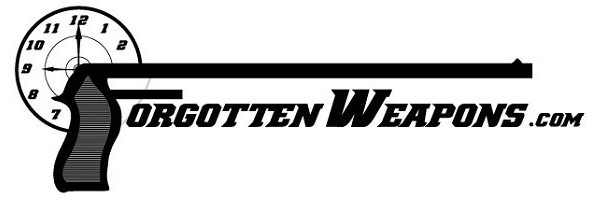After achieving independence from the British, Burma (now Myanmar) looked to develop a domestic small arms industry to supply its armed forces. The first weapon produced there was the BA-52, a copy of (how they chose this I don’t know) the Italian TZ-45 submachine gun. By the late 1950s, talks were underway with Rheinmetall and H&K to license production of the G3 at a factory being built with German technical assistance. Ultimately Burma adopted and produced several versions of the G3:
BA-63: A direct copy of the G3
BA-64: A light machine gun or support variant with a bipod and carry handle
BA-72: A shortened carbine model
BA-100: A designated marksman’s rifle
Today we are looking at a BA-64 that has been rebuilt to BA-63 configuration, and a BA-72 carbine. The BA-72 is really neat to me; not only has the barrel been shortened but the receiver and stock both have been as well, resulting in a very handy and compact little rifle.
Full video on the Italian TZ-45:

Ian, thank you for the video. As a side note, here is some information about Fritz Werner, an important German armaments company:
Fritz Werner Werkzeugmaschinen AG was a machine and tool factory in Berlin-Marienfelde that was founded by Friedrich Karl Werner on April 1, 1896. The company developed, produced and distributed high-quality machine tools. The product range was focused primarily on the manufacturing technology of milling. Under the patronage of the Reich Arms and Munitions Procurement Office during the First World War, the company, which was initially run as a general partnership, was converted into a joint-stock company on August 12, 1915. In 1923, Fritz Werner equipped the Solothurn arms factory in Switzerland with machine tools for arms production.
Before the Second World War, Fritz Werner AG employed over 3,000 people. Until the beginning of the war in 1939, machine tools for arms production were manufactured and delivered to German arms companies such as Mauser or Rheinmetall. During the Second World War, the company also produced weapons itself, which were marked with the WaA code “crv” for Fritz Werner Werk II.
Entire factories for weapons production
Fritz Werner’s production program comprised complete manufacturing plants for weapons production, including all machines, tools, devices and gauges. The supply of such complete plants contributed to the good reputation of the German machine tool industry abroad at the time.
After the end of the Second World War
The factory buildings suffered severe damage during the Second World War, but were rebuilt shortly after the end of the war. Subsequently, the production of milling and grinding machines was resumed on a significant scale.
At the beginning of the 1950s, the company underwent significant expansion, which also included an increase in international activities.
The company Fritz Werner had been based in Burma since 1953 and operated an arms factory in the country from 1957. Over the years, representatives of the company Fritz Werner had built up very close contact with the top leadership of the military junta. A friendly relationship developed between the then dictator Ne Win and Fritz Werner. At that time, the Fritz Werner arms factory was still located on the outskirts of Rangoon, but was later relocated to the Arakan-Joma mountains near the border with Bangladesh. This region is still off-limits to foreigners today. In the South-East Asian metropolis of Rangoon, the company began large-scale production of HK G3 rifles, 7.62 mm and 9 mm ammunition, and a range of explosive weapons such as Claymore mines and mortar shells with a caliber of up to 81 mm, with the assistance of the German arms manufacturer Heckler & Koch.
Today, Myanmar Fritz Werner Industries Co. Ltd. is part of the MAN Ferrostaal Group.
Very interesting info Alexander G. Thanks for taking the time to post it.
The company, and it’s ties to undemocratic countries, made headlines back in the day.
I wonder how easy it was to set up a factory in Burma in the 50ies. What level of industrialization was available in that country at that time?